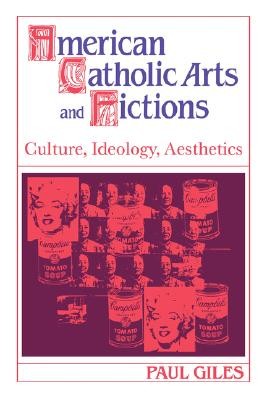| American Catholic Arts and Fictions Contributor(s): Giles, Paul (Author) |
|
 |
ISBN: 0521417775 ISBN-13: 9780521417778 Publisher: Cambridge University Press OUR PRICE: $195.70 Product Type: Hardcover - Other Formats Published: June 1992 Annotation: In American Catholic Arts and Fictions, Paul Giles describes how secular transformations of religious ideas have helped to shape the style and substance of works by American writers, filmmakers, and artists from a Catholic background, such as Orestes Brownson, Theodore Dreiser, Mary McCarthy, Robert Mapplethorpe, Alfred Hitchcock, and Robert Altman. The book also explores how Catholicism was represented and mythologized by other American writers. By highlighting the recurring themes and preoccupations of American Catholic fictions, Giles challenges many of the accepted ideas about the centrality of romanticism to the American literary canon. He reconstructs the different social, historical, and philosophical contexts from which aesthetics in the "Catholic" tradition has emerged, and he shows how these stand in an oblique relationship to the assumptions of the American Enlightenment. |
| Additional Information |
| BISAC Categories: - Literary Criticism | American - General |
| Dewey: 810.992 |
| LCCN: 91036223 |
| Series: Cambridge Studies in American Literature & Culture |
| Physical Information: 1.61" H x 6.32" W x 9.3" (2.00 lbs) 564 pages |
| Descriptions, Reviews, Etc. |
| Publisher Description: Paul Giles describes how secular transformations of religious ideas have helped to shape the style and substance of works by American writers, filmmakers and artists from Catholic backgrounds such as Orestes Brownson, Theodore Dreiser, Mary McCarthy, Robert Mapplethorpe, Alfred Hitchcock and Robert Altman. The book also explores how Catholicism was represented and mythologized by other American writers. By highlighting the recurring themes and preoccupations of American Catholic fictions, Giles challenges many of the accepted ideas about the centrality of Romanticism to the American literary canon. He reconstructs the different social, historical, and philosophical contexts from which aesthetics in the Catholic tradition have emerged, and shows how these stand in an oblique relationship to the assumptions of the American Enlightenment. |